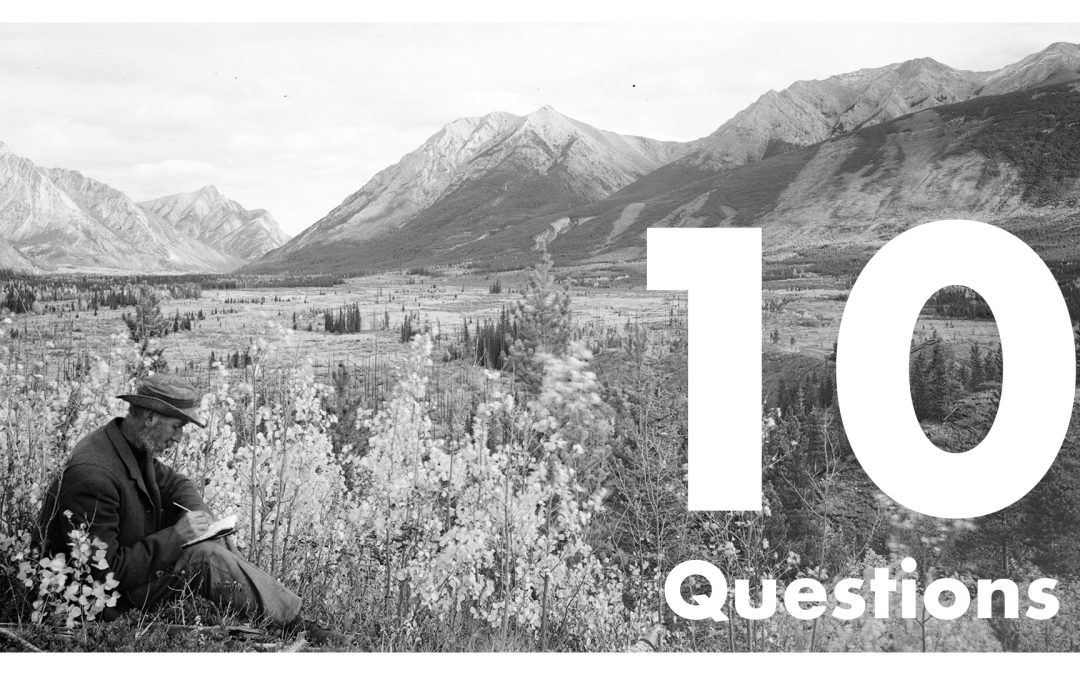Kate Fryer and Sonia Voicescu, January 9th 2024
As we enter the New Year, we wish to unveil a brand new series to the blog that introduces you, dear reader, to the faces of the Mountain Legacy Project: “10 Questions.” From postdoctoral fellows to research assistants, each person has been asked to share their unique perspectives, experiences and stories by responding to the same 10 questions.
Join us for the next several months in celebrating the human element behind the data, the faces behind the pixels, and the stories behind the landscapes. We begin this series by introducing Sonia Voicescu, PhD Candidate, brilliant mind, and scone baker extraordinaire.
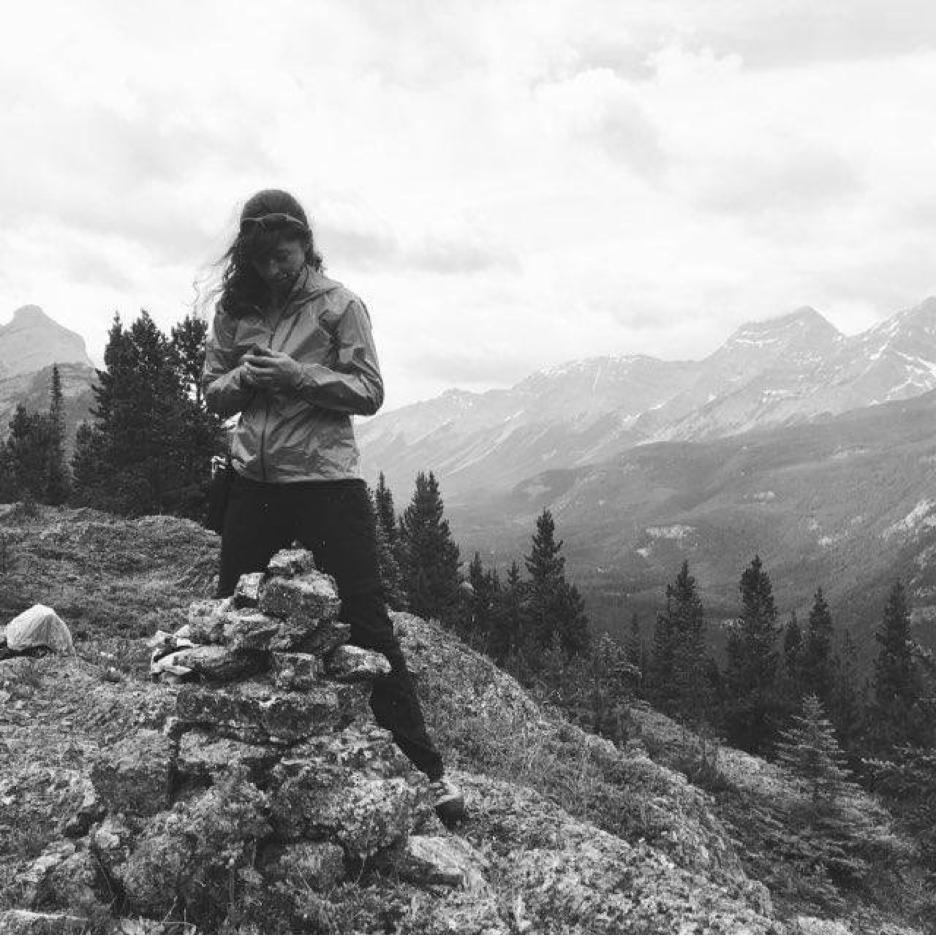
Sonia Voicescu taking coordinates at summit cairn, Nidd 1948 station 8. July 1st 2018. Photo credit: Alex Hakonson
Tell us a little about your background prior to joining the MLP.
My background is in ecological restoration and environmental sciences. Prior to joining the MLP, I worked for the federal government for a few years on various environmental health projects and regulatory initiatives. I am originally from La Belle Province, more specifically beautiful Montreal, and prior to that Romania. This translates into a “healthy” passion for all things garlic and dill, and heavy criticism regarding what a perfect poutine actually is.
What specifically drew you to the MLP?
I first learned about the MLP during the Galiano Island Field Course, taught by MLP PI Eric Higgs. At the time this was to be my last university course ever, but after attending a presentation by Eric on the MLP, I was instantly drawn to the project and wanted to see how I could be involved. Embarking on a PhD seemed like the only reasonable, long-term, and life-changing commitment that would properly do justice to such an interesting project. Many aspects drew me to it, but to keep this brief I would say that the combination of history, ecology, and hands-on research in some of the most beautiful places in this country is what fascinated me the most and made me want to be a part of the research team.
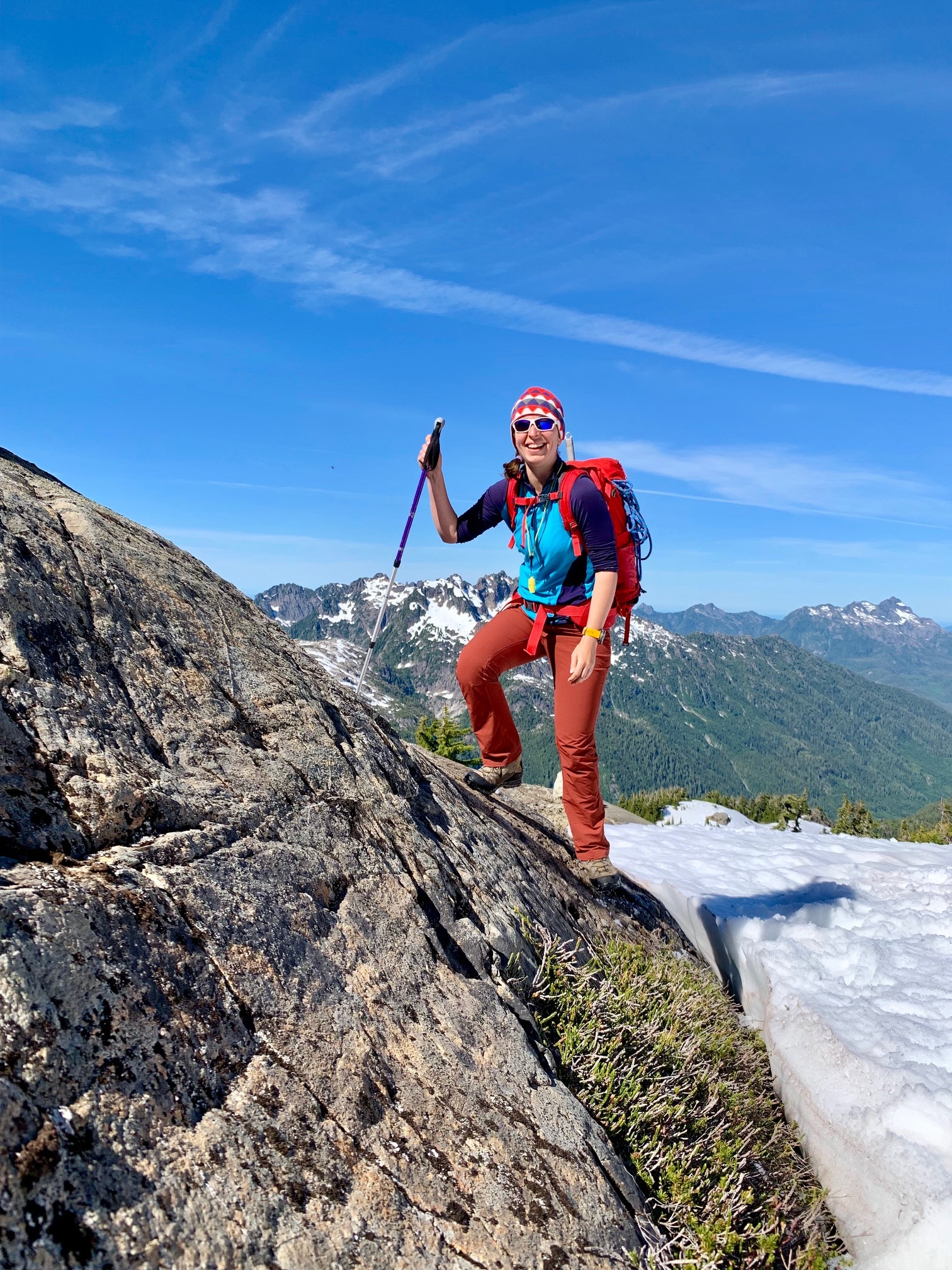
Sonia Voicescu, fieldwork training 5040 peak June 2019. Photo credit: Alina Fisher
What is your research focus or role with the MLP?
I am a PhD Candidate with the MLP and my research focuses on understanding the cultural and ecological implications of landscape change in mined areas. Specifically, I am interested in understanding how people perceive landscape change and relate to the places they inhabit, as well as researching opportunities for ecological restoration in supporting the long-term sustainability of those areas.
Can you share a personal passion or interest that you bring to the project?
Other than a lot of garlicky and dill-based snacks, I think that having been part of the MLP for so many years (although now graduation is maybe in sight?!) allows me to have a lot of deep knowledge on different aspects and processes that guide the project. I love to share this information with newer members of team and see them thrive as they begin to explore all this project has to offer.
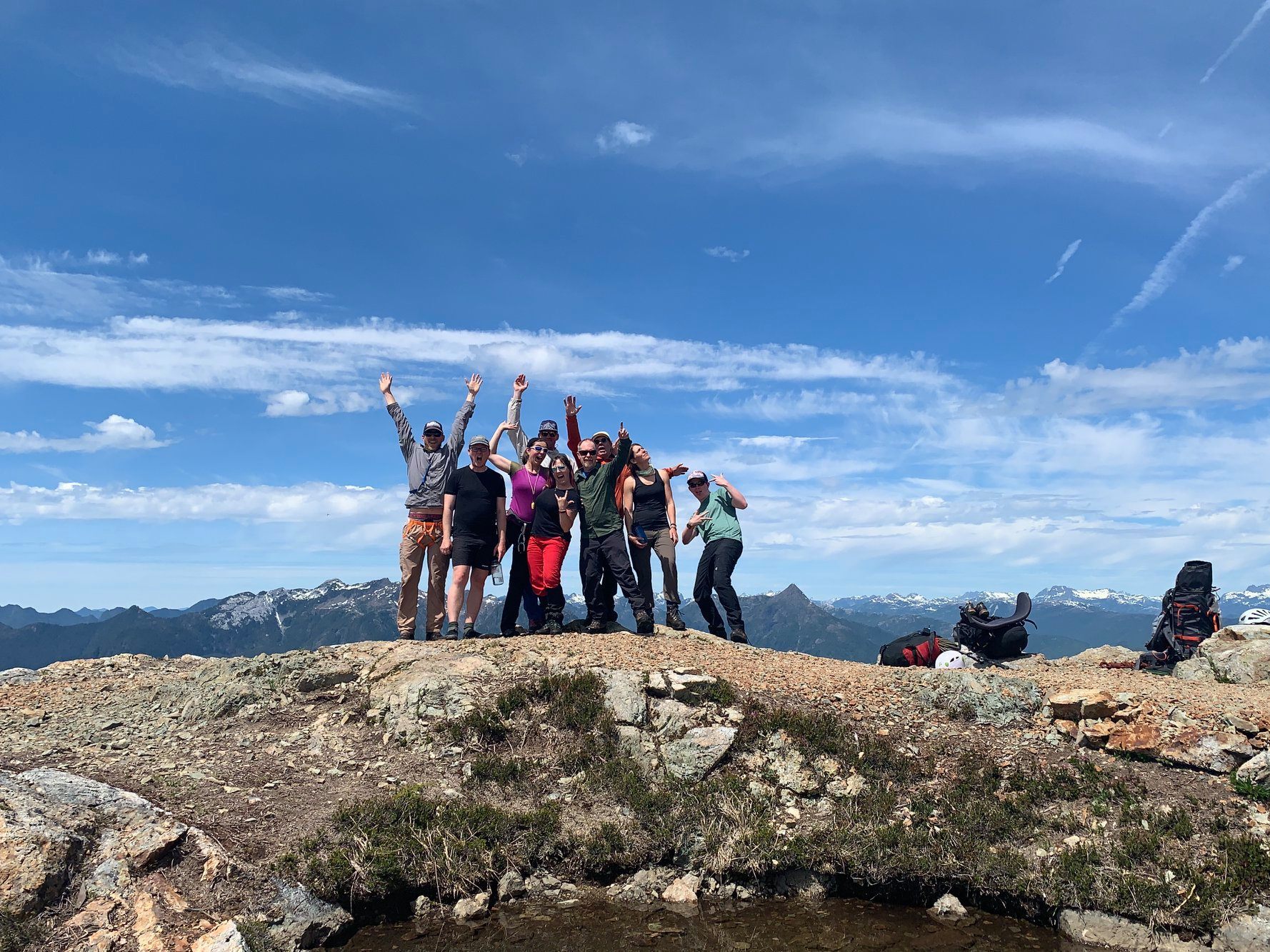
Field crew training, 5040 peak, June 2019
What is your most memorable moment from your MLP experience to date?
There have been so many incredible moments, but one that particularly stood out for me was our training session in 2019 at Hišimy̓awiƛ (5040 Peak) here on Vancouver Island. We were fortunate to have Ken Wylie and Graeme White to lead our training, and it was one of the rare occasions in which almost everyone on the MLP was present at the same spot. Being able to learn from such experienced mountaineers in such an incredible environment will always be a high point of my time with the MLP.
And what has been your most challenging moment and how did you overcome it?
Working in the mountains certainly comes with its share of challenges, whether they are physical and/or mental. A challenge that perhaps many others have also experienced came in 2020, when we were not sure if we would be able to do fieldwork because of the COVID-19 pandemic. Prior to the start of the pandemic, we were hoping to have a long field season to support three graduate student projects (including mine). However, the pandemic certainly put a damper on our plans, and we had to re-adjust how and when we would be doing fieldwork. We downsized quite a bit, and a lot of time was spent planning and organizing a very focused field season. A core team of three intrepid field crew left in early August 2020 and we managed to complete almost all the stations on our list. To date I feel like that was one of the most successful field seasons I have been a part of.
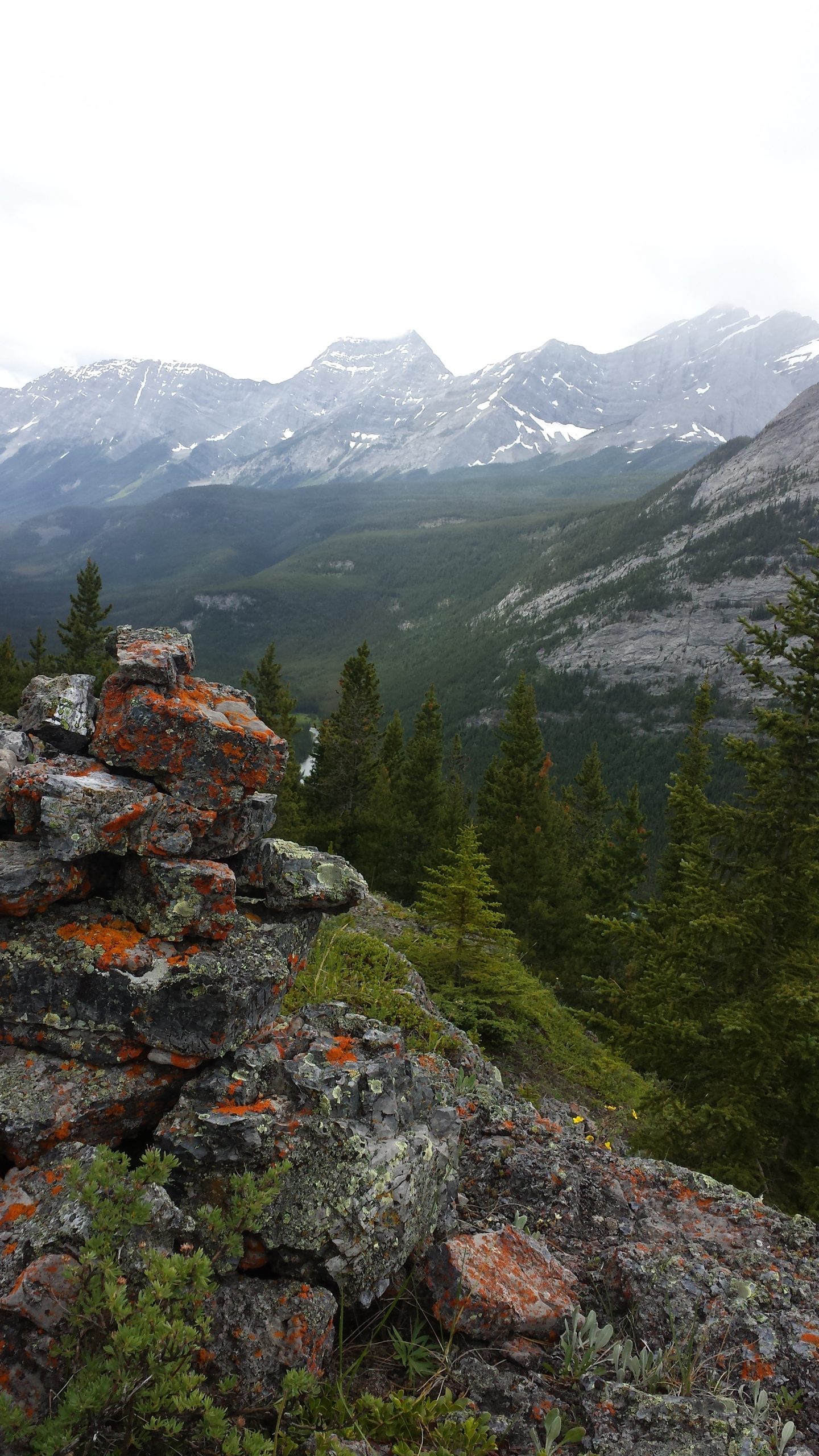
Historic cairn at Nidd 1948 station 8. July 1st 2018. Photo credit: Sonia Voicescu
Which is your favorite camera station and why?
I can only pick one??! What a hard question to answer! One that really stands out for me was my first “official” camera station during my first field season with the MLP in the summer of 2018: Nidd 1948 station 8, Wedge Mountain West. It was my first hike to a station, and we meandered up along hydro lines and deer trails. When we finally reached our station, we found a beautiful “original” cairn. I say original because you could tell that not many people had ventured up there since the original surveyors came up, and the cairn was large and spotted with crustose lichen. It was the first time I experienced the “walking in their footsteps” feeling that many MLPers get while doing this work. We were not able to get perfect shots because of the weather, but to me it felt like a pretty exhilarating start to many more great stations. For a better description of that day, read the words of Karson Sudlow at:
https://explore.mountainlegacy.ca/stations/show/2861

Cinnamon bun from Cinnamon Bear Cafe in Coleman Alberta! Photo and eating credit: Sonia Voicescu
Our most important question! What’s your preferred backcountry snack while out in the field (or in the lab)?
Hardbite chips, spicy dill pickle flavor. Or Cinnamon buns from the Cinnamon Bear Cafe in Coleman, AB. But would only recommend those post-hike.
In lab snacks: giant cookies from Munchies Bar.
Good gear is essential! What is your favourite piece of equipment for fieldwork or working in the lab?
This is another hard one to answer, because we are fortunate to work with such great gear in the field as well as in the lab. If I have to pick something though, I’m going to go with field equipment that has been absolutely essential for me doing fieldwork in the mountains (and beyond!) these last couple of years: my Scarpa boots. Can’t go very far in the mountains without good hiking boots. These babies have everything: waterproof, high ankle support, rubber toe, and on top of that they come in size 8 ¾, which as it turns out is my EXACT foot size. Not 8, not 9, but 8 ¾. These are Cinderella boots. I’ll be waiting for my sponsorship from Scarpa now, thank you.
Sum up your MLP experience in three words.
Mountains, Cairns, Camera
Title Image: D.B. Dowling, 1905, Flat Pond South, C5-4, https://explore.mountainlegacy.ca/historic_captures/show/16877

